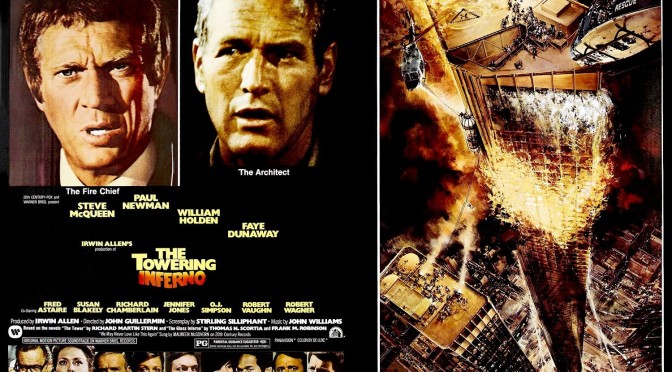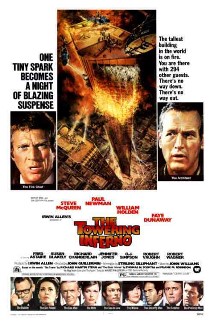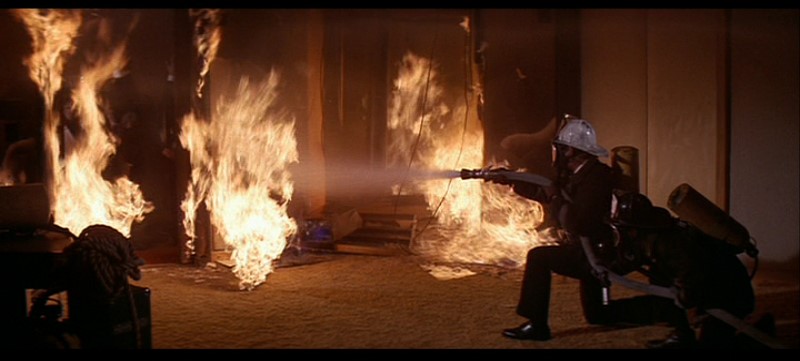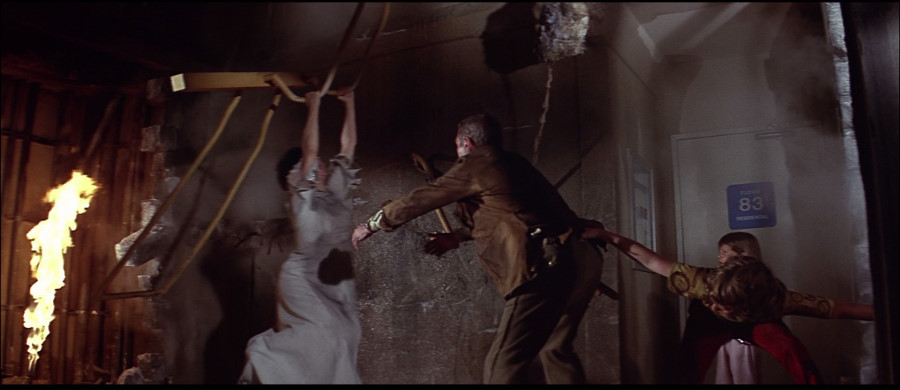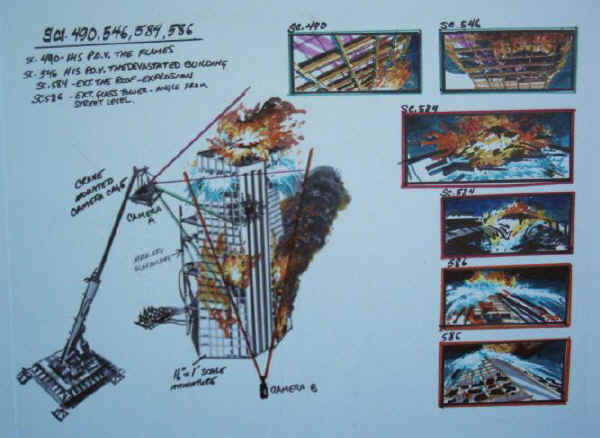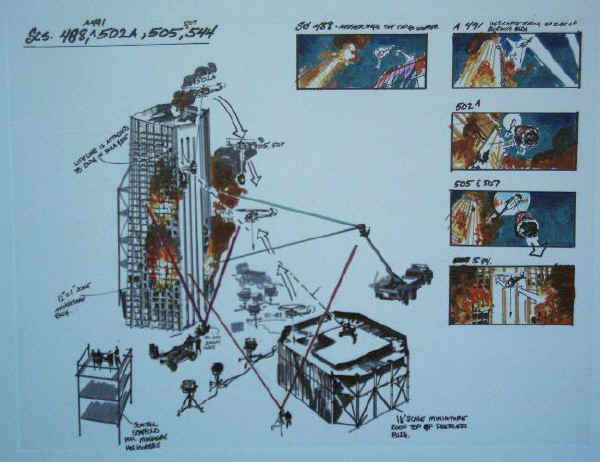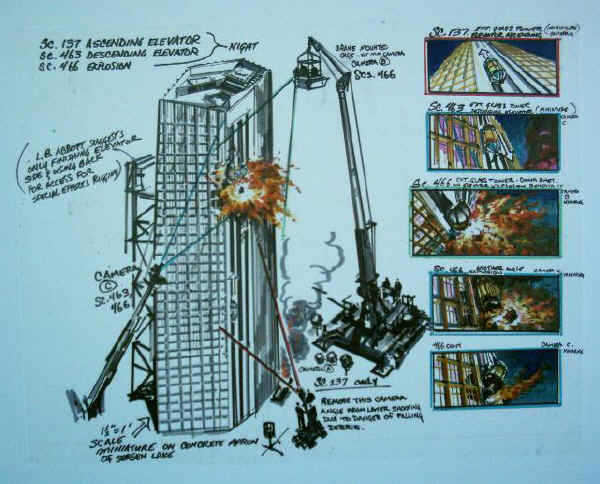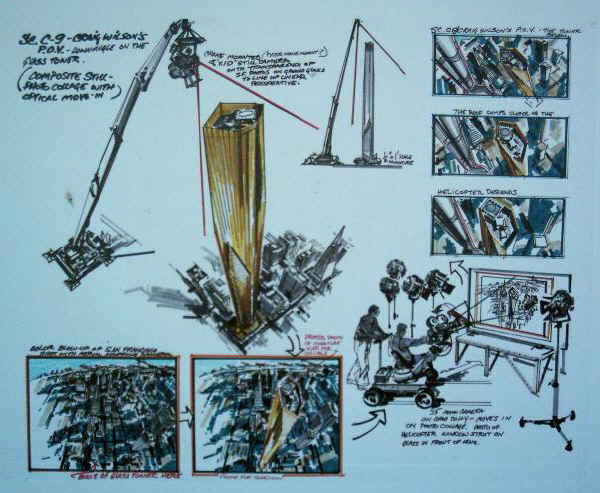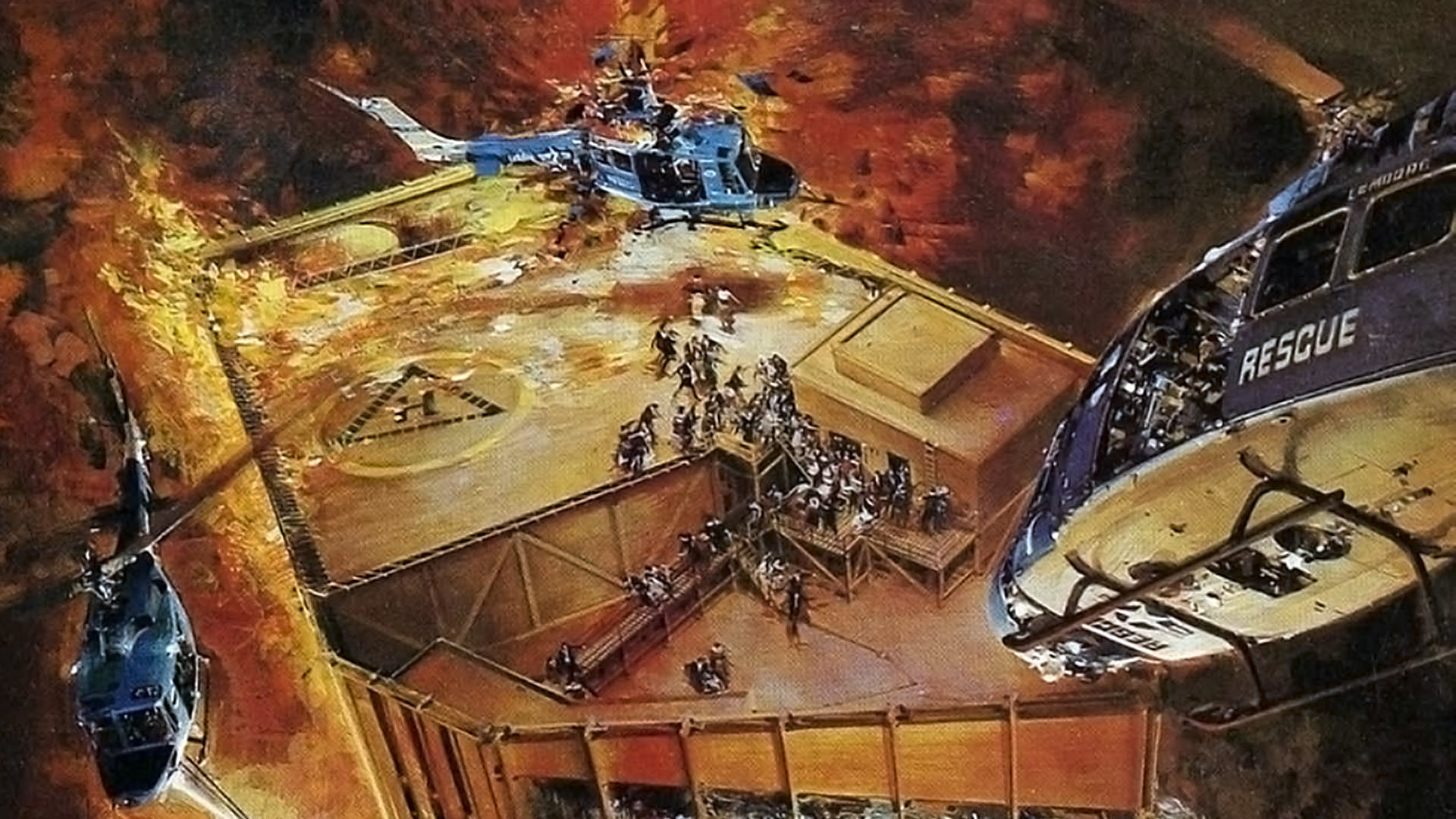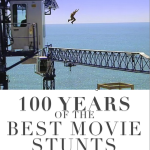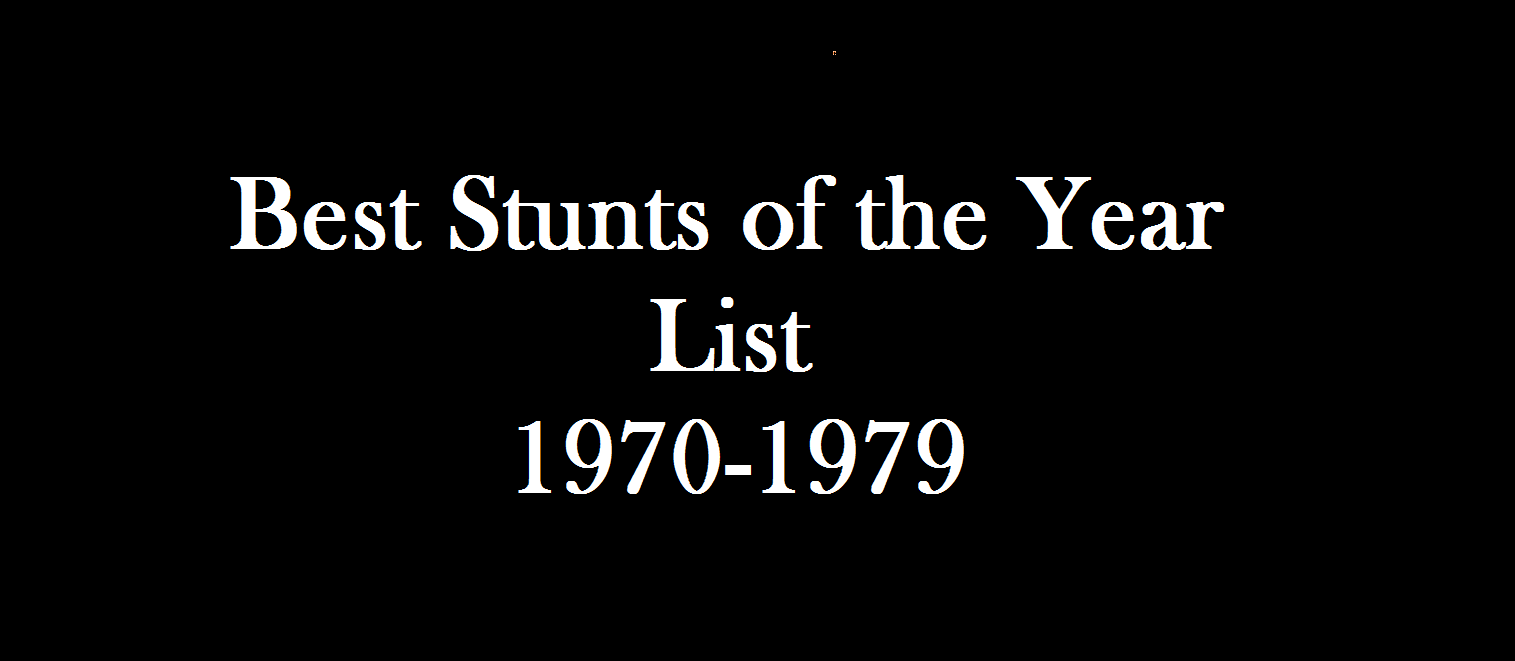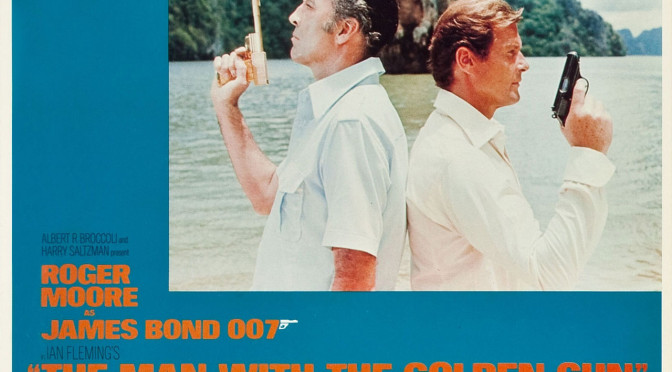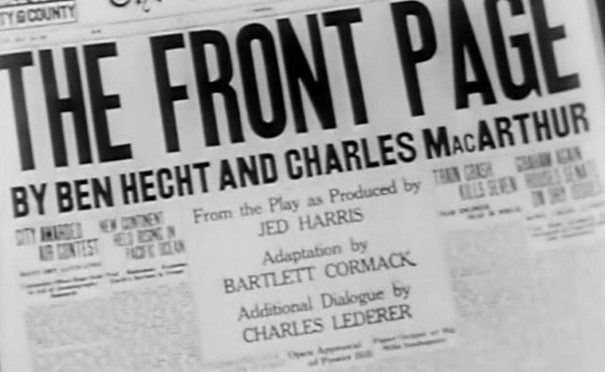The Towering Inferno is my favorite of Irwin Allen’s disaster film series. It’s got everything that makes these films so much fun, a great all-star cast, lavish sets, tension, suspense and fantastic stunts! It missed being singled out in my book 100 Years of the Best Movie Stunts for 1974 simply because of the complexity of Bumps Willard and Raymond McHenry’s incredible mathematical car stunt in The Man With The Golden Gun. So it gets a mention in our 100 Years Blog!
Based on two novels: “The Tower” by Richard Martin Stern, and “The Glass Inferno” by Thomas N. Scortia and Frank M. Robinson. After the success of The Poseidon Adventure(1972)(also mentioned in the book for Best Stunt of 1972), disaster was hot property and Warner Brothers bought the rights to film “The Tower” for $390,000. Eight weeks later Irwin Allen (of 20th Century Fox) discovered “The Glass Inferno” and bought the rights for $400,000. To avoid two similar films competing at the box office the two studios joined forces and pooled their resources, each paying half the production costs. In return, 20th Century Fox got the US box office receipts and Warners the receipts from the rest of the world.
Both novels were inspired by the construction of the World Trade Center in the early-1970s, and what could happen in fire in a skyscraper. In Richard Martin Stern’s novel, “The Tower”, the fictional 140-floor building was set next to the north tower of the World Trade Center. The climax of the novel was centered around a rescue mounted from the north tower of the World Trade Center. Sad fact is that the World Trade Center themselves were the setting of a real-life horror, when they were hit by airplanes flown by terrorists in September 11, 2001. Strangely, the real events far surpassed anything that was imagined on any of these Irwin Allen films as way of unfathomable terrifying disaster. If he would have gone to the studios with the script of 9/11, they would have laughed him out the door for what seems like pure science fiction. One strange coincidence regarding The Towering Inferno and it’s close resemblance at times to 9/11 was the last day of film production occurred on September 11th, 1974.
I’m doubtful, a film of this type could ever be made today, as the events would seem too real for most people and not just a fun popcorn blockbuster action film, like it did in the early 70’s. The audience flooded the theaters back then for films like these and if you can forget about real-life, are still quite enjoyable today. The stunts are especially nice and are littered throughout the entire film.
The expanse of the stunts were so broad that a lot of storyboards were made to visualize what we would be seeing on screen. Here’s some examples of how big this production really was. These storyboards were created by Joe Musso. Courtesy of The Tom Pennock Collection.
The thing that is remarkable in a film like this is that the stunts really are endured by everyone, the actors, the crew, and the stunt team. The danger factor for everyone is extremely high. You can see a lot of the actors doing the stunts themselves, Paul Newman did most of his own stunts, including climbing up and down the bent stairwell railing. Steve McQueen did most of his stunts for the film, including having 7,000 gallons of water dumped on him in the climactic final attempt to put out the fire. Throughout the entire film, as the disaster rages throughout the building, eventually everything gets destroyed. Of the 57 sets built for the production, only eight remained standing when filming ended.
My favorite scenes have to be the ones with the grand outdoor elevator. The scenic elevator is actually one of two in the Hyatt Regency Hotel in San Francisco. This elevator was used in numerous movies including Time After Time (1979), High Anxiety (1977), Telefon (1977), and Freebie and The Bean (1974) (which we mentioned in the blog last week). Irwin Allen directed all the action sequences in the film himself, including the climactic final explosions to put the fire out. According to Susan Flannery, 20th Century Fox refused Irwin Allen to direct all of The Towering Inferno. Irwin Allen directed all the action sequences and John Guillerman was hired only to direct the actors only for non-action sequences. There were a total of four separate camera crews were utilized in some scenes, a record at the time. The crews were designated with capturing different aspects of the scenes: character filming, action shots, special effects, and aerial shots.
Producer Irwin Allen as defined by Wikipedia: Irwin Allen (June 12, 1916 – November 2, 1991) was an American television, documentary and film director and producer with a varied career who became known as the “Master of Disaster” for his work in the disaster film genre. His most successful productions were The Poseidon Adventure (1972) and The Towering Inferno (1974). He also created several popular 1960s science fiction television series, such as Voyage to the Bottom of the Sea, Lost in Space, and Land of the Giants.
Check out our new Book, 100 Years of the Best Movie Stunts!

